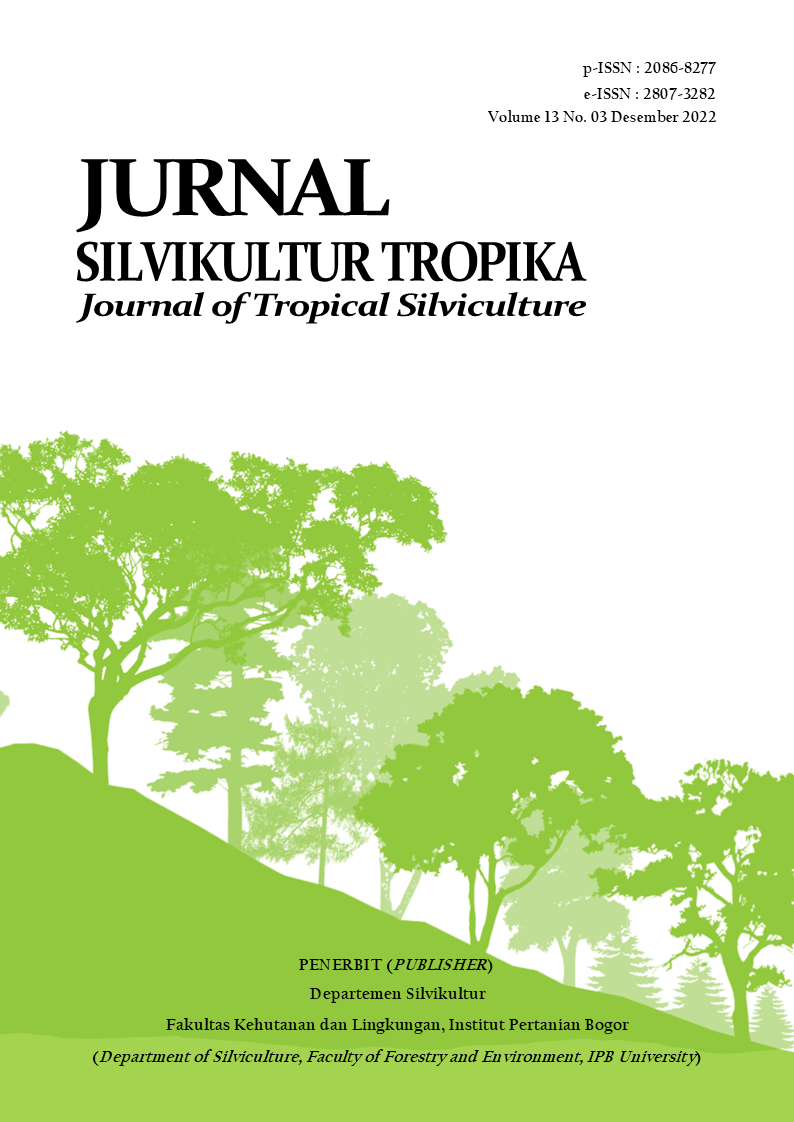Pertumbuhan Sengon Solomon F2 dan Produktivitas Padi Gogo dengan Jarak Tanam yang Berbeda dalam Sistem Agroforestri
Abstract
Agroforestry combines the component of forestry and annual crops as solution to balance the food needs with conservation efforts. The combination of sengon and upland rice in agroforestry system has opportunity to be developed. Sengon and rice production can be increased by determining the appropriate spacing. This study aims to measure sengon solomon F2 growth (Paraserianthes falcataria (L.) Nielsen) and know the productivity of upland rice Inpago LIPI Go2 (Oryza sativa L.) variety with different planting spaces in agroforestry system. The results of the study were analyzed using one-way variance (ANOVA) and the Tukey test was carried out with a confidence interval of 95% on significantly different results. The results showed that sengon solomon with planting spaces of J1 (1,5 m x 1,5 m) and J2 (3 m x 1,5 m) was not significantly different in sengon solomon's growth. The biggest potential productivity produced by rice with the distance is 0,75 m from solomon sengon of J1 (2,58 ton ha-1) and 1 m from sengon solomon of J2 (2,37 ton ha-1).
Keywords: agroforestry, Oryza sativa, Paraserianthes falcataria, planting spaces
Downloads
Copyright (c) 2022 Nurheni Wijayanto, Tazkiah Amalyris Karimatunnisa

This work is licensed under a Creative Commons Attribution 4.0 International License.










